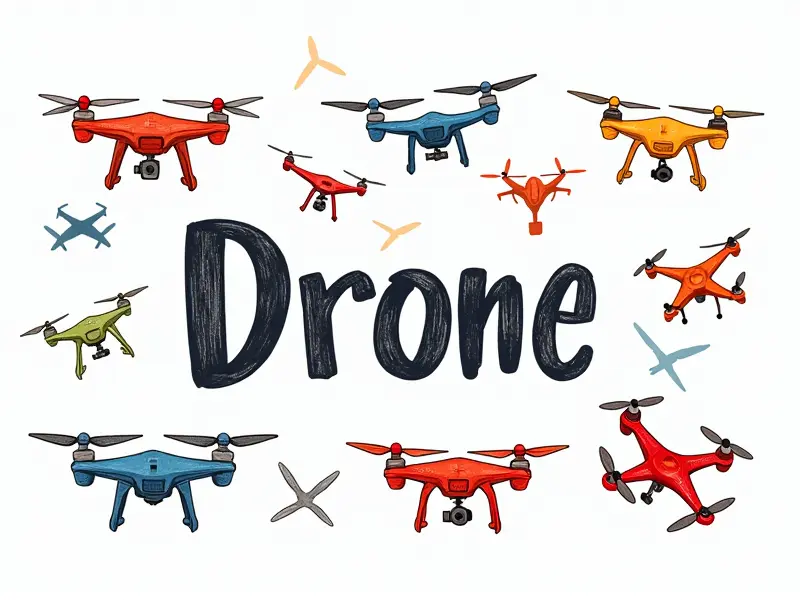DIY drone weatherproofing

Ultimate Guide: Weatherproofing FPV Racing Drones
If you're an avid FPV racing drone enthusiast, you know how frustrating it can be when your drone's performance is hindered by bad weather. Rain, snow, and even high humidity can cause malfunctions that put a damper on your flying experience. But fear not! This ultimate guide will walk you through the process of making your FPV racing drone weatherproof so you can keep flying no matter what Mother Nature throws at you.
Keep Flying No Matter the Weather
The key to maintaining optimal performance in adverse conditions is proper weatherproofing. By taking a few simple steps, you can ensure that your drone remains functional and reliable even when the skies turn gray or snowy. This guide will cover everything from basic fixes to advanced modifications that will help keep your FPV racing drone airborne.
Simple Fixes for Weatherproofing Drones
Before diving into more complex weatherproofing methods, it's worth considering some straightforward solutions:
- Cover critical components: Use waterproof tape or electrical tape to cover exposed circuitry and connectors.
- Protect the battery: Encase your drone’s LiPo batteries in a waterproof bag to prevent water damage.
- Seal openings: Apply silicone sealant around any areas where moisture can enter, such as propeller guards or camera housings.
DIY Weather Shield for RC Helicopters
While this guide focuses primarily on FPV racing drones, similar principles apply to RC helicopters. Creating a DIY weather shield involves:
- Selecting the right material: Use lightweight but durable materials like silicone or plastic sheeting.
- Cutting and fitting: Carefully cut the material to fit over your helicopter’s body, ensuring it doesn’t interfere with flight controls.
- Securing the shield: Attach the weather shield using clips or adhesive strips for a snug fit without compromising aerodynamics.
Easy Steps to Make Your Drone Waterproof
Making your drone fully waterproof is more involved but highly rewarding. Here’s how you can do it:
- Disassemble the drone: Take apart all removable components, including propellers and camera.
- Clean and dry: Thoroughly clean each part with isopropyl alcohol to remove any dirt or residue.
- Apply waterproof coating: Use a conductive spray paint designed for electronics to coat all exposed surfaces.
Build a Weather-Resistant Drone Shell
A custom-built shell can provide robust protection against the elements. Follow these steps:
- Design your shell: Sketch out a design that covers critical areas without adding excessive weight.
- Select materials: Choose lightweight yet strong materials such as polycarbonate or PETG plastic.
- 3D print or CNC machine: Use a 3D printer or CNC machine to create the shell according to your design specifications.
Protect Your Drone from Rain & Snow
Rain and snow pose unique challenges. Here’s how you can safeguard against them:
- Waterproof housing: Install a waterproof case around the flight controller and other sensitive electronics.
- Dust-proof filters: Fit dust-proof air filters to prevent water droplets from entering through vents.
Maximize Flight Time with Weatherproofing Techniques
Effective weatherproofing can also extend your drone’s flight time by reducing the risk of mechanical failures caused by moisture. By implementing these techniques, you’ll enjoy longer and more reliable flights:
- Maintain battery health: Regularly check LiPo batteries for signs of water damage and replace as needed.
- Optimize aerodynamics: Ensure that any added weatherproofing does not negatively impact the drone’s performance or efficiency.
Keep Your RC Helicopter Flying All Year Round
To ensure your RC helicopter remains operational throughout different seasons, consider these additional tips:
- Winter prep: Store your helicopter indoors during winter months to avoid exposure to freezing temperatures.
- Spring maintenance: Perform a thorough inspection and cleaning before the first flight of spring.
DIY Tips for Waterproofing RC Aircraft
Waterproofing RC aircraft goes beyond just covering components. Here are some DIY tips to enhance durability:
- Use silicone sealant: Apply a thin layer of silicone around all joints and openings.
- Incorporate drainage holes: Add small holes at the bottom of your aircraft’s body to allow water to drain easily.
Easy Guide to Water-Proofing Drones
To wrap up, here's a quick guide to waterproofing your drone effectively:
- Identify vulnerable areas: Pinpoint parts of the drone that are most susceptible to moisture.
- Select appropriate materials: Choose from a variety of sealants and coatings based on your specific needs.
- Test before flying: Conduct thorough tests in controlled environments to ensure all components function properly after waterproofing.
Conclusion
Weatherproofing your FPV racing drone or RC helicopter is crucial for maintaining performance and reliability across various weather conditions. By following the steps outlined in this guide, you can protect your investment and enjoy uninterrupted flying experiences regardless of the weather. Whether it’s a simple fix or an extensive modification, taking these measures will ensure that your drone remains operational and ready to fly whenever you are.

